Best Expense Management App 2024
In 2024, choosing the best expense management app means finding a solution that balances ease of use, automation, and security. The top-rated apps in this category offer seamless integrations with financial tools, allowing users to track spending, automate reporting, and stay on top of their budgets. These apps are designed for both individuals and businesses, providing comprehensive tracking, customizable reports, and the ability to manage expenses on the go.
For those looking to streamline expense tracking, features like receipt scanning, real-time analytics, and cloud storage are key. The best apps also come with multi-device support, offering consistent performance across smartphones, tablets, and desktops.
Key Features
- Real-time expense tracking
- AI-based automated reporting
- Multi-device support
- Cloud synchronization
- Receipt scanning and categorization
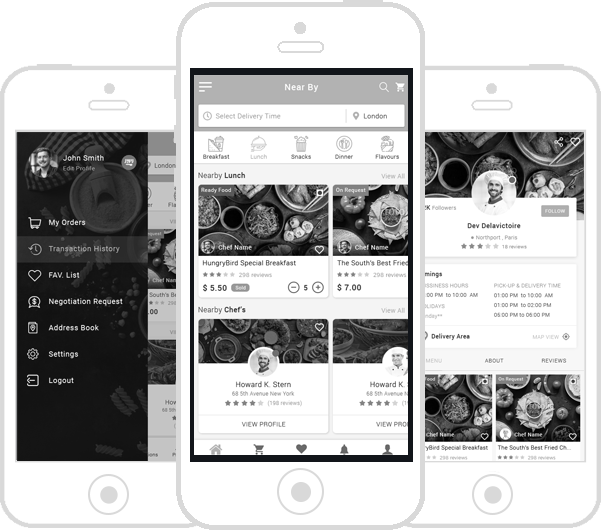

Expense Tracking and Budgeting App
An expense tracking and budgeting app helps users gain full control over their finances by offering a detailed overview of all transactions. With these apps, users can set specific budgets for categories like groceries, travel, and entertainment, and receive alerts when they're nearing their limits. The intuitive dashboards make it easy to track daily, weekly, and monthly expenses, ensuring that users can monitor spending habits and make informed financial decisions.
The apps also provide data-driven insights and spending trends, allowing users to fine-tune their financial strategies. Many of these apps sync with bank accounts, offering automatic updates for a seamless experience.
- Budget categorization and limits
- Daily, weekly, and monthly tracking
- Sync with bank accounts and credit cards
- Spending insights and analysis
- Customizable financial goals
Automated Expense Reporting Software
Automated expense reporting software transforms the way businesses manage and submit expense claims. By eliminating manual data entry, these tools drastically reduce errors and save time for employees and finance teams. With automatic categorization, receipt uploads, and integrated approval workflows, expense reports can be submitted and approved faster than ever before.
Most solutions also integrate with accounting software, enabling real-time updates and compliance with company policies. These tools are particularly useful for large teams and organizations, allowing managers to review and approve expenses with ease.
Key Features
- Automated receipt scanning and categorization
- Integrated approval workflows
- Real-time accounting software integration
- Compliance with company expense policies
- Reduced manual entry and errors


Expense Management App for Small Businesses
Small businesses benefit significantly from using an expense management app, as it simplifies tracking business-related expenses and reimbursements. These apps are built to handle business purchases, travel expenses, and other operational costs, ensuring that everything is logged accurately. By using expense management software, small businesses can stay compliant with tax regulations and generate detailed reports for budgeting and forecasting.
Many of these apps offer multi-user functionality, allowing teams to submit expenses, while managers oversee the approval process. Small businesses can also integrate these tools with their accounting systems to streamline operations.
Key Features
- Track business expenses and receipts
- Multi-user access for teams
- Detailed financial reports
- Tax compliance and deductions
- Integration with accounting systems
Personal Finance and Expense Management App
A personal finance and expense management app helps individuals take charge of their finances by tracking daily spending, setting savings goals, and managing debts. Users can create customized budgets and monitor their expenses across categories like groceries, utilities, and dining out. The app provides insights into spending patterns and suggests areas for improvement, making it easier for users to meet their financial goals.
Many personal finance apps also offer debt management features, enabling users to track loan payments and minimize interest rates. These apps often include bank integration for seamless transactions.
Key Features
- Customized budget creation
- Savings and debt management
- Insights on spending patterns
- Bank account synchronization
- Notifications and reminders for bills


Business Travel Expense Tracker App
For businesses managing travel expenses, a dedicated business travel expense tracker app is essential. These apps allow employees to log travel expenses, including flights, meals, and accommodation, directly from their mobile devices. Expense reports can be generated instantly, and receipts uploaded on the go, saving time and improving accuracy.
The apps often integrate with travel management platforms, enabling businesses to gain insights into travel spending and compliance. Additionally, they help companies manage travel policies by automatically flagging expenses that fall outside of policy guidelines.
Key Features
- Real-time travel expense tracking
- Receipt upload and storage
- Integration with travel management tools
- Travel policy compliance
- Expense reporting for faster reimbursements
Cloud-based Expense Management Software
Cloud-based expense management software offers businesses the flexibility and security needed to manage expenses from anywhere. These apps allow users to access expense reports, upload receipts, and review approvals without being tied to a specific location or device. The cloud infrastructure ensures data is secure and accessible, making it ideal for remote teams or businesses with multiple offices.
These tools also provide scalability, ensuring that businesses can add users and upgrade plans as they grow. They integrate with other cloud-based tools like accounting and HR systems to streamline operations further.
Key Features
- Remote access to expense management
- Scalable plans for growing businesses
- Secure cloud storage for receipts and reports
- Integration with cloud accounting systems
- Multi-location and team support


Mobile Expense Management Tools
Mobile expense management tools offer users the convenience of tracking and managing expenses directly from their smartphones. With these tools, users can capture receipts, log expenses, and review reports from anywhere. The app typically provides real-time syncing, ensuring that the latest data is always available on all devices.
These apps are perfect for freelancers, business travelers, and anyone who needs to track expenses while on the move. Many also offer GPS mileage tracking and automatic categorization for business expenses.
Key Features
- On-the-go expense tracking
- Real-time data syncing
- GPS mileage tracking
- Receipt capture via smartphone camera
- Mobile-friendly user interface
Expense Reimbursement App for Employees
An expense reimbursement app simplifies the process of employees submitting expense claims and receiving reimbursements. These apps enable employees to quickly log expenses, attach receipts, and submit claims for approval. Once approved, the funds are reimbursed directly to the employee’s bank account, eliminating lengthy paperwork. Our app development in India ensures seamless integration of these features for efficient expense management.
For managers, the app provides an easy-to-use platform to review and approve expenses, ensuring faster reimbursement cycles. It also helps ensure that all claims comply with company policies.
Key Features
- Quick expense logging and submission
- Digital receipt attachment
- Instant reimbursement to bank accounts
- Managerial approval workflows
- Compliance with corporate policies


Expense Report Automation App
An expense report automation app is designed to eliminate manual reporting processes by automating the generation of detailed expense reports. With this tool, users can easily track expenses, categorize them, and generate reports in just a few clicks. It reduces the administrative burden of compiling receipts and ensures accuracy in reporting.
Businesses benefit from this automation as it saves time and enhances financial transparency. Many apps also offer integration with accounting software to further streamline the reporting process.
Key Features
- Automated expense report generation
- Easy categorization of expenses
- Receipt management
- Integration with accounting software
- Error reduction in reporting
List of Expense Management Apps
| App Name | Description | Features |
|---|---|---|
| Expensify | A comprehensive expense management tool designed for both individuals and businesses. |
|
| Zoho Expense | A cloud-based expense management software tailored for small to large businesses. |
|
| Concur | A robust expense management system ideal for large enterprises and travel management. |
|
| ExpensePoint | An intuitive expense management app designed for both business and personal use. |
|
| Rydoo | A user-friendly app that simplifies expense management with real-time tracking and reporting. |
|
List Of Seller Screens for Expense Management Apps
| Screen Name | Features | Explanation |
|---|---|---|
| Seller Dashboard |
|
Provides a summary of the seller’s sales, recent transactions, and any pending payments or actions required. |
| Invoice Management |
|
Allows sellers to create and manage invoices, track their status, and download or print invoices for their records. |
| Payment Tracking |
|
Enables sellers to view and track their received and pending payments, view their payment history, and generate reports on payments. |
| Expense Submissions |
|
Facilitates the submission of business expenses, allows attachment of receipts and documents, and provides tracking for the submission status. |
| Seller Profile |
|
Provides options for sellers to edit their personal and business information, manage contact details, and update payment preferences. |
| Reports & Analytics |
|
Allows sellers to generate detailed reports on sales and expenses, analyze their financial performance, and export reports in different formats. |
List Of Buyer Screens for Expense Management Apps
| Screen Name | Features | Explanation |
|---|---|---|
| Buyer Dashboard |
|
Provides a summary of the buyer’s purchase history, pending invoices, and recent transactions, allowing for quick access to key information. |
| Purchase Orders |
|
Enables buyers to create and manage purchase orders, track their status, and view a history of all orders placed. |
| Invoice Management |
|
Allows buyers to view and download invoices, track their payment status, and request corrections if there are any discrepancies. |
| Expense Claims |
|
Facilitates the submission of expense claims, attachment of receipts and supporting documents, and tracking of claim status through the approval process. |
| Buyer Profile |
|
Allows buyers to update their personal and account information, manage contact details, and adjust payment preferences as needed. |
| Reports & Analytics |
|
Provides tools to generate detailed reports on purchases and expenses, analyze spending patterns, and export reports in different formats for further analysis. |
Estimated Cost Breakdown for Expense Management App
| Cost Component | Description | Estimated Cost |
|---|---|---|
| Project Planning | Initial consultation, project scoping, and requirement analysis. | $2,000 - $5,000 |
| Design | UI/UX design, wireframes, and mockups for the app. | $5,000 - $10,000 |
| Development | Frontend and backend development, including coding and integration. | $15,000 - $30,000 |
| Testing | Quality assurance, bug fixing, and usability testing. | $3,000 - $7,000 |
| Deployment | Deployment to app stores, server setup, and configuration. | $2,000 - $5,000 |
| Maintenance | Ongoing support, updates, and bug fixes after launch. | $1,000 - $3,000 per year |
| Marketing & Promotion | App store optimization, online marketing, and promotional activities. | $3,000 - $7,000 |
| Additional Costs | Third-party integrations, licenses, and unforeseen expenses. | $1,000 - $3,000 |
| Total Estimated Cost | Total cost for developing and launching the app. | $26,000 - $70,000 |
What is an Expense Management App?
An expense management app is a software application designed to help individuals or businesses track, manage, and report their expenses. It simplifies the process of recording expenses, categorizing them, and generating financial reports.
How can an Expense Management App benefit my business?
An expense management app helps businesses streamline expense tracking, reduce administrative tasks, enhance accuracy in financial reporting, and improve budget management. It also facilitates expense approvals and reimbursements.
Can I use an Expense Management App for personal budgeting?
Yes, many expense management apps are designed for personal use and can help individuals track their spending, create budgets, and manage personal finances efficiently.
What features should I look for in an Expense Management App?
Key features to consider include expense tracking, receipt capture, expense categorization, report generation, integration with accounting software, multi-currency support, and mobile accessibility.
How does receipt scanning work in Expense Management Apps?
Receipt scanning involves using the app's camera feature to take a photo of a receipt. The app then uses Optical Character Recognition (OCR) technology to extract key information such as amount, date, and merchant, and automatically categorizes the expense.
Are Expense Management Apps secure?
Reputable expense management apps implement strong security measures, including data encryption, secure authentication, and regular updates to protect user information. Always check the app's security features and privacy policies.
Can Expense Management Apps integrate with other financial tools?
Yes, many expense management apps offer integration with accounting software, payroll systems, and financial planning tools, allowing for seamless data synchronization and more efficient financial management.
How can I submit an expense report using an Expense Management App?
To submit an expense report, you typically need to enter expense details, attach receipts, categorize the expenses, and then submit the report for approval. The app will handle the rest, including tracking the report’s status.
Can I access my Expense Management App from multiple devices?
Most expense management apps offer cloud-based access, allowing you to use the app from multiple devices, including smartphones, tablets, and computers, ensuring you can manage your expenses on-the-go.
What is the cost of using an Expense Management App?
The cost varies depending on the app and its features. Some apps offer free basic versions with limited functionality, while others may require a subscription fee or one-time purchase for full access to advanced features.
How do Expense Management Apps handle multi-currency transactions?
Expense management apps that support multi-currency transactions provide real-time exchange rate updates and allow users to record expenses in different currencies. They convert the expenses into a base currency for reporting and analysis.
Can I customize expense categories in the app?
Yes, many expense management apps allow users to customize expense categories to match their specific needs, making it easier to organize and track expenses according to personal or business requirements.
What types of reports can I generate with an Expense Management App?
Common report types include expense summaries, detailed breakdowns by category, monthly or yearly financial reports, and comparative analysis reports. Customizable reporting options are often available to tailor reports to your needs.
How can I ensure compliance with company expense policies using the app?
Expense management apps often include features such as policy compliance checks, approval workflows, and expense limits to ensure adherence to company expense policies and streamline the approval process.
Is customer support available for Expense Management Apps?
Most expense management apps offer customer support through various channels, including email, phone, live chat, and online help centers. Check the app’s support section for detailed information on available support options.
How do I set up an Expense Management App?
Setting up an expense management app typically involves downloading the app, creating an account, configuring initial settings such as expense categories and user permissions, and integrating with other financial tools if needed.
Can I track recurring expenses with an Expense Management App?
Yes, many expense management apps offer the ability to track recurring expenses by setting up automatic entries for regular payments or subscriptions, which helps in budgeting and managing ongoing financial commitments.
What types of data can I export from an Expense Management App?
Expense management apps usually allow you to export data in various formats, such as PDF, Excel, or CSV. This feature helps in sharing data with accountants, integrating with other financial systems, or performing further analysis.
Can I use an Expense Management App offline?
Some expense management apps offer offline functionality, allowing you to record and manage expenses without an internet connection. These expenses will be synchronized with the cloud once you are back online.
How do Expense Management Apps handle tax calculations?
Expense management apps often include features for tracking and calculating taxes based on expense categories and tax rates. This helps in preparing tax reports and ensuring accurate tax filings.
Are there any limitations to using an Expense Management App?
Potential limitations may include restrictions on the number of users, limited integration options, or constraints on the number of transactions that can be tracked. It’s important to review the app’s features and limitations before choosing one.
How do I choose the right Expense Management App for my needs?
Consider factors such as the app’s features, ease of use, integration capabilities, security, and cost. Additionally, reading user reviews and trying out free versions or demos can help you determine if the app meets your specific needs.
Your choice of weapon
Build your Apps for any Platform
We to code. It's our passion


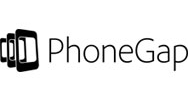
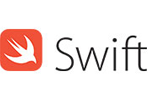
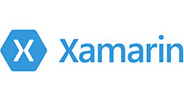
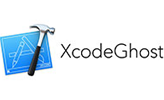




you can also reach us at our given
email address or phone number.







